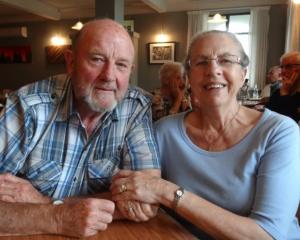Young teenage girls are now slightly more likely to binge-drink than boys of the same age - but experts say the girls are still being led on by older boys.
A survey by Massey University's Social and Health Outcomes Research and Evaluation (Shore) public health unit has found that among 16-17-year-old drinkers, 28 per cent of girls against 25 per cent of boys drank at least eight standard drinks in a typical drinking session last year.
The numbers of girls having at least eight drinks at a sitting almost doubled since a previous survey in 2004 in the 16-17 and 18-19 age groups.
But the number of boys drinking at least eight standard drinks fell in both age groups, after rising in the nine years up to 2004.
Shore director Professor Sally Casswell said the increase up to 2004 followed the arrival of ready-to-drink (RTD) "alcopops" in 1995 and the lowering of the drinking age from 20 to 18 in 1999.
The reversal for boys since 2004 is in line with Auckland University's Youth 2007 surveys of 9000 high school students which found the number of students who drank alcohol at all fell from 70.1 per cent in 2001 to 60.6 per cent in 2007.
But that study found the number of drinkers who were bingeing - drinking at least five standard drinks within five hours - rose from 49 per cent to 57 per cent.
Study leader Professor Shanthi Ameratunga said the increased polarisation between non-drinkers and binge drinkers suggested some students were shunning alcohol because they could see how bingeing affected their friends.
Dr Simon Denny, who led the Youth 2007 study, said the contrasting trends for boys and girls in the Massey survey could reflect the alcohol industry targeting young women with RTDs.
A report on women and alcohol, also published yesterday, found that RTDs made up 70 per cent of the alcohol intake of girls aged 14 to 17 and that RTD drinkers usually drank more in a session than those drinking other spirits, beer or wine.
Dr Casswell said girls' drinking exceeded boys' in the 16-17 age group only at the extreme end of binge drinking - at least eight standard drinks, equivalent to three, 8 per cent 440ml cans of Woodstock Bourbon and Cola.
Among those drinking six or more standard drinks, "we didn't see the same decline in the men", she said.
The high binge drinking among girls aged 16-17 might reflect "young women associating with older drinkers".
Men were more likely than women to binge drink at all ages from 18 upwards.
"Overall, women are still drinking only about one-third of the alcohol available in New Zealand so men are still drinking by far and away the majority of alcohol," she said.
The study surveyed 2000 people in all age groups, down from 6500 in 2004. The sample size was too small to measure trends in age groups below 16, but Dr Casswell said the changes in the older teenage groups were statistically significant.
But she said the telephone survey was done through landlines, and the finding of reduced binge-drinking among teenage boys might be distorted if heavy binge-drinkers were more likely to have only mobile phones.
- Simon Collins of the New Zealand Herald












